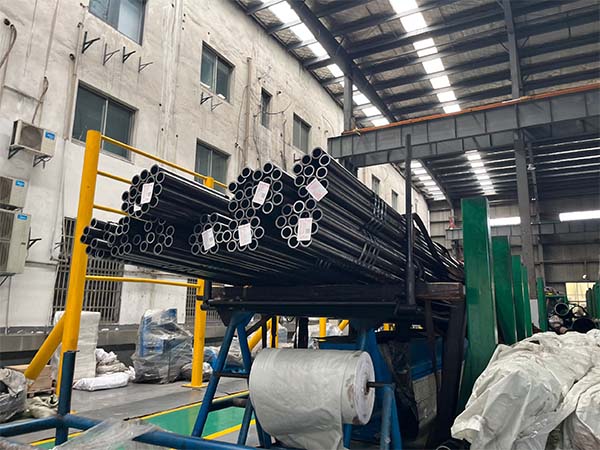The main difference between
precision seamless pipes and ordinary
seamless pipes lies in the dimensional accuracy. The dimensional tolerance of precision seamless pipes can be controlled within ±0.1 mm, while that of ordinary seamless pipes is usually above ±0.5 mm. In addition to the differences in dimensional accuracy, precision seamless pipes and ordinary seamless pipes also differ in surface finish, mechanical properties, production processes, application fields, etc. Below, I will provide a detailed interpretation of the differences between them

1. Differences in dimensional accuracy
Outer diameter tolerance
For common seamless pipes: The outer diameter error is approximately ±0.1 millimeters, which means that for seamless pipes used in national standard structures, it fluctuates by about 2% of OD (outer diameter).
Precision seamless pipes: The outer diameter error is between ±0.01 mm and ±0.05 mm, and some specifications can be customized to reach ±0.025 mm.
Wall thickness tolerance
Common seamless pipe: According to the GB/T 8162 standard, the wall thickness tolerance range is relatively large, often fluctuating between ±10% and ±12.5%, so the actual thickness fluctuates significantly.
Precision seamless pipes: Usually controlled by a dual-track system, they have absolute tolerances (approximately ±0.05 millimeters) and are also limited within a relative error of ≤5%, ensuring more stable thickness.
Concentricity
Ordinary seamless pipes: There is no strict control over coaxiality, and the allowable coaxiality error is relatively large.
Precision seamless pipes: The coaxiality is strictly controlled, with a general error not exceeding ±0.05 millimeters, ensuring high concentricity of the inner and outer circles.
Straightness (Straightness)
Ordinary seamless pipes: There is no clear standard for straightness, and the pipes may have slight bends.
Precision seamless tubes: The straightness control is usually no more than 0.30 millimeters per meter, and sometimes it is required to be higher, controlled within the range of ≤ 0.15 millimeters per meter.
Precision seamless pipes are typically made from ordinary seamless steel tubes through one or more cold drawing processes. The cold drawing process can significantly enhance the surface finish and dimensional accuracy of the steel pipes.
Ordinary seamless pipes are mostly produced by hot rolling processes, with relatively rough surfaces and lower precision. They are suitable for general applications, such as transporting liquids, gases or for structural purposes.
2. Differences in surface finish
The surface roughness (Ra) of common seamless tubes is usually 3.2-6.3 μm, while that of precision seamless tubes is typically 0.8-1.6 μm. Multiple cold drawing processes enable precision seamless tubes to have a higher surface quality than ordinary seamless tubes.
3. Differences in mechanical properties
Precision seamless tubes, due to undergoing multiple processes such as cold drawing and pickling, have no oxide layer on the inner wall, a denser structure, and higher strength, enabling them to withstand high-frequency vibrations and alternating loads. Its unique performance makes it highly suitable for secondary processing, such as mechanical parts, hydraulic cylinders, furniture support tubes, etc.
4. Differences in application fields
Ordinary seamless pipes are suitable for pipeline transportation (oil and gas, water supply). Projects such as structural supports and scaffolding that do not have high requirements for dimensions and surface quality.
Precision seamless tubes are suitable for internal pipelines in hydraulic systems and interfaces of instruments and meters. Components in precision machinery (such as textile, printing, and medical equipment) that have strict requirements for fit tolerances and surface finish; High-reliability scenarios such as aerospace and automotive steering systems.
To sum up, there are obvious differences between ordinary seamless pipes and precision seamless pipes in terms of dimensional accuracy, surface quality, mechanical properties, and application fields. Precision seamless pipes have higher performance and a wider range of applications, while ordinary seamless steel pipes are mainly used in general structural engineering and conveying pipelines.
Read more: Precision seamless pipe
